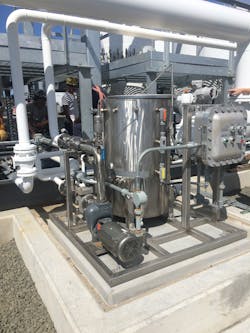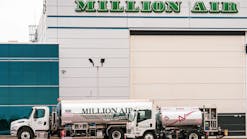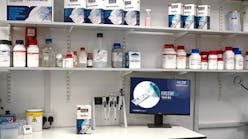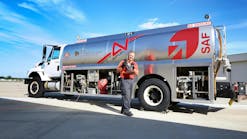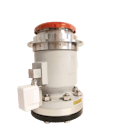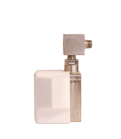For all those who are sumping fuel regularly, at some point you may have asked yourself, should I be reclaiming this fuel, and if I did reclaim it can I use it?
An aviation fuel recovery unit can be an essential tool to minimize waste fuel. As experts training for ground support operations, we often receive questions from our customers about recovery of fuel that is removed (sumped) during regular fuel maintenance procedures. Many times the focus of these questions is on safety in regard to fuel quality control. In documents such as the FAA Advisory Circular AC-20-125 (dating back to 1985) it specifically states, “Fuel handling personnel should have procedures to assure that clean and dry fuel is being delivered to the storage system. Daily, weekly, monthly, and other calendar time checks should be made on a continuing basis to assure that the fuel in fixed storage and dispensing units and systems is free of water prior to delivery to an aircraft. Personnel dispensing fuel should be recurrently trained in fuel handling to assure that only clean and dry fuel is dispensed.”
So it is obvious, and nothing new that fuel deliver samples, tank drains, filter sumps (under pressure) must be performed. That being the case, what do we do with that fuel? Have you ever stopped to calculate how much fuel annually is removed from sampling, tank drains, and filter sumps? When we consider the money value it begs the question “Can we reuse the sumped fuel?” There is an answer to the question, one that makes good sense both from the perspective of quality control and financial consideration. Aviation fuel recovery units allow fuel contaminated with water and sediment to enter through a tangential nozzle that swirls the mixture and sediment to separate it from clean fuel. It works on the principle that fuel and water are immiscible, and of a different density. Once the water and sediment are drawn off, clean fuel can be pumped back to storage.
We have heard that operators desiring to be resourceful, and not wasteful, use this sumped fuel in various ground support equipment and airport maintenance vehicles. Although this action is with good intent, there are two government agencies that will not appreciate this practice; one is the EPA and the other the IRS. When aviation fuels are used in engines other than those designed specifically for aviation applications, the exposure exists for a potentially adverse environmental effect with potentially severe consequences. Aviation fuels are taxed differently than over-the-road fuels, resulting in possible unexpected tax implications. The main reason for not using aviation fuels in ground equipment is cost, aviation fuels are clearly much more expensive than automotive fuels.
Let’s get back to our sump samples. Cost may be the most significant driver in consideration of a Fuel Recovery System; situations exist where fueling agents are actually paying an organization to physically remove their sump samples as hazardous waste. This practice is not only expensive but may have potential exposure to place your organization in a position of liability should the waste fuel be disposed of improperly. When analyzing the cost of a Fuel Recovery System, one must take into consideration the savings. Simply the total number of gallons sumped each day during required daily fuel maintenance procedures, then multiply that number by the present cost per gallon of fuel. In many cases, a Fuel Recovery System pays for itself in less than six months while preserving our environment.
All fuel sump samples can be recovered from samples taken during a fuel delivery, storage tank draining’s and filter sumps. The only sump samples that may not be recovered are those from actual aircraft, as the origin can not be easily identified. When recovering aviation fuel sump samples, the concept is to accumulate all sump samples together, allow for proper settling time (1 hour per foot for Jet Fuel and 15 minutes per foot for Avgas), remove any water or solid contamination and return the balance back to storage.
When appraising what type of Fuel Recovery System to acquire, some important considerations should be:
- Typical daily sump volume for proper sizing (Typical sizes from 15 Gallon-300 gallon)
- Large top opening for easy pouring of samples
- Stainless steel construction with Socket Weld Fittings
- Conical bottom
- Pressure vacuum vent
The design should allow for Water and Sediment to be easily removed and convenient functionality for clean fuel to be returned back to storage.
Options available on some Fuel Recovery Units that have great appeal are:
- Filter system with Differential Pressure Gauge
- Automatic Over-Fill Protection
- Hand Pump to return reclaimed fuel to storage
- Electric Motor to return reclaimed fuel to storage
- Remote Sample Jar
- PLC Controls
- Explosion Proof Oil-bath Heater for Cold Climates
- Sight Glass for volume identification
If you are one who has previously considered fuel sample reclamation, perhaps it deserves a second look. The benefits are multiple, not the least of which is cost savings, and a positive impact to the bottom line. Fuel reclamation not only eliminates the cost of disposing of the sample, drained and sumped fuel, but also reduces the purchase of new product over the course of the year. Reclamation reduces the environmental impact of fuel systems by lowering the amount of disposed contaminated fuel. Reclaiming the sampled, drained and sumped fuel and putting it back through filtration ensures clean fuel in the system and reduces maintenance costs, as well as extends filter life, and compliance with NFPA requirements. Overall, a fuel reclamation system will very quickly turn itself into an investment and not an expense.
Walter P. Chartrand draws from 40 years of experience in the aviation industry to share ideas and practices on how to set your aviation operations apart in a very highly competitive General Aviation marketplace.
Walter began his career at a local airport fueling small aircraft, growing to manage one of the nations most prestigious Corporate Jet Service Centers in Houston Texas. He earned his Multi-Engine Instrument pilot ratings and has flown for a living. His career has taken him from the world’s largest integrated oil company where his talents were put to work ensuring quality fuel products to his own training and consulting company working to improve the safety and profitability of the general, corporate and commercial aviation marketplaces.
Walter’s formal education includes an Associate degree in Aeronautical Science and a Bachelor of Science Degree in Mechanical Engineering with a minor in Technical Education.
